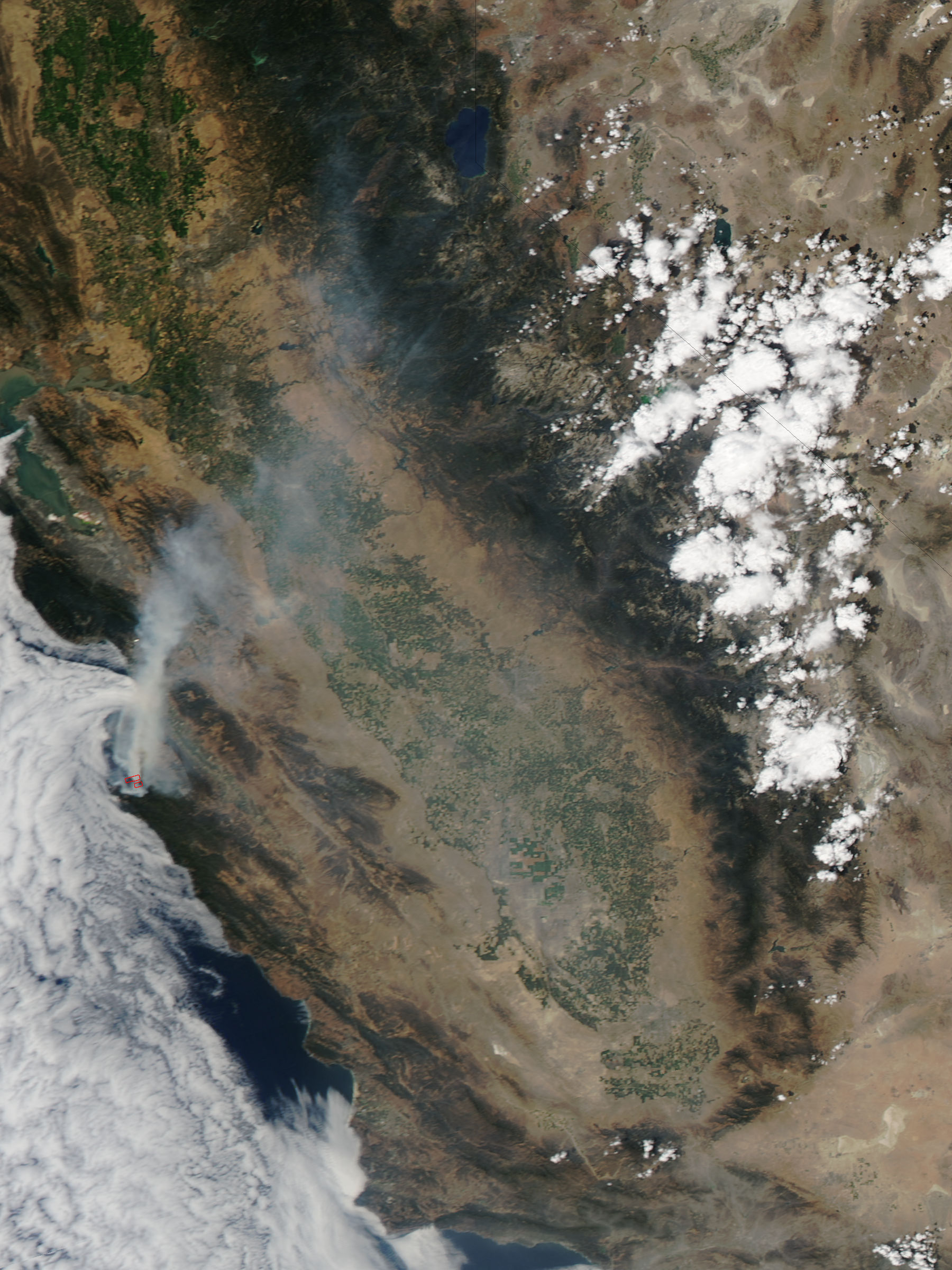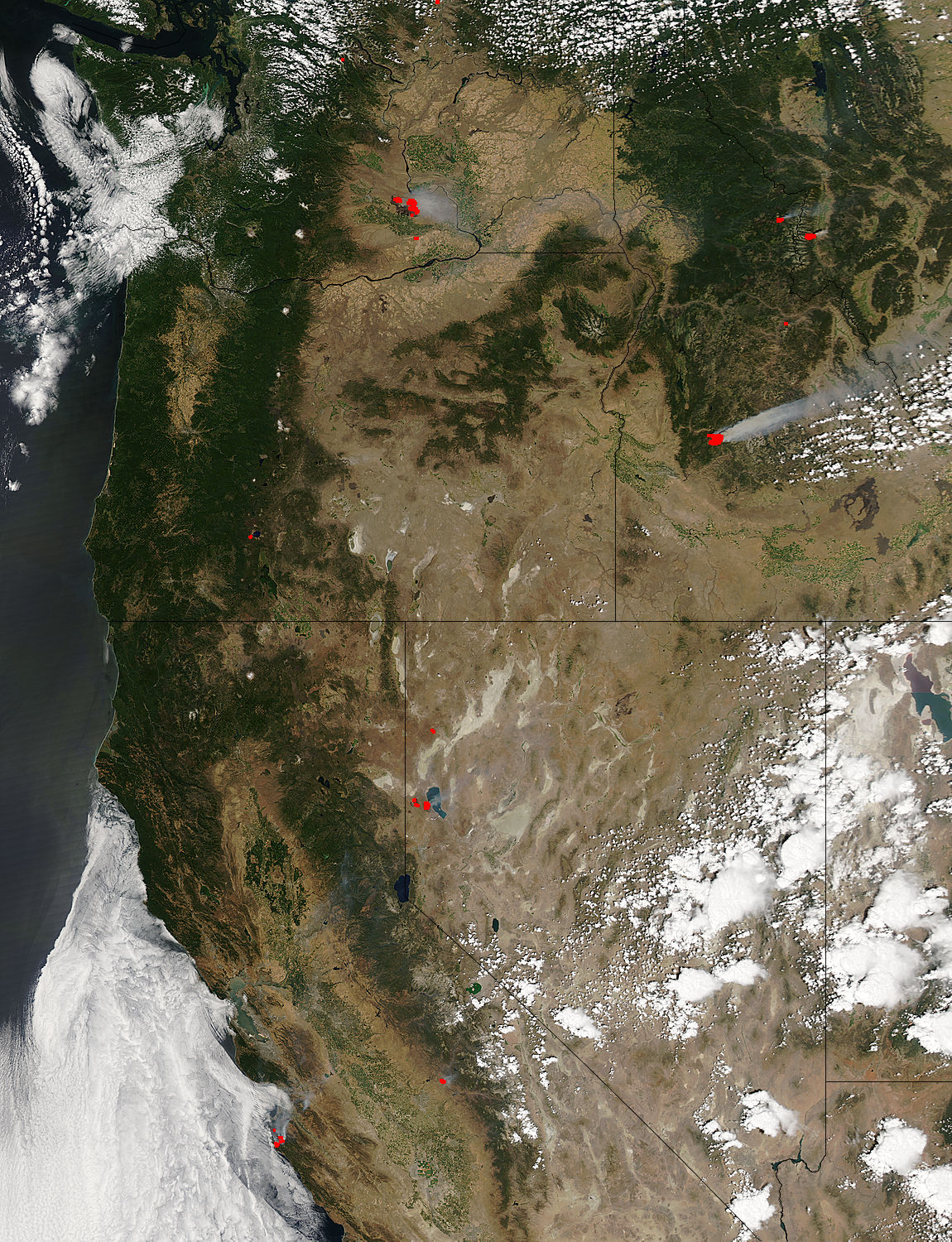Giant Wildfire in California Seen from Space by NASA Satellite

The Soberanes fire, currently burning near Monterey, California, was imaged by a NASA satellite on Sunday afternoon, as the blaze continued to swallow up tens of thousands of acres of land.
The fire, which has been burning for a little more than three weeks, had destroyed over 33,000 acres on Saturday (July 30), according to the Los Angeles Times. But in just a few days, the engulfed area has expanded to include 43,400 acres (67.8 square miles or 175.6 square kilometers) according to the state wildfire management agency, Cal Fire.
The image of the fire, trailing white smoke out over the Pacific Ocean, was captured with the Moderate Resolution Imaging Spectroradiometer (MODIS) aboard NASA's Aqua satellite at 4:35 p.m. EDT (20:35 GMT). The red lines on the image show actively burning areas detected by MODIS.
The resolution of the image is 820 feet (250 meters) per pixel, and the image shows an area about 3,730 miles (600 km) long and 260 miles (420 km) wide. A black line representing the California border with Nevada is imposed on the image.

Due to the fire, 350 residents have been evacuated, and a total of 57 residences and 11 outbuildings (such as barns and sheds) have been destroyed, according to Cal Fire.
Another image taken by the Aqua satellite on July 31 shows the northern section of California, as well as Nevada, Oregon, Washington and part of Idaho. You can see more images of the fire in this NASA image gallery, by searching "sobranes" (which is how it's spelled on the site).
The Aqua satellite is a NASA mission to study the water cycle on Earth, and its suite of instruments takes measurements of evaporation from the oceans, water vapor in the atmosphere, clouds, precipitation, soil moisture, sea ice and land ice. It also tracks snow cover on the land and ice, vegetation cover on the land, phytoplankton, and dissolved organic matter in the oceans, among other things.
Get the Space.com Newsletter
Breaking space news, the latest updates on rocket launches, skywatching events and more!
Imaging wildfires is not specifically part of Aqua's mission, but most NASA satellites do more than what's on their list of mission objectives, said Jeff Schmaltz, a support scientist for the MODIS instrument.
"There are many side benefits that can be gained by different innovative uses of the data [from a NASA satellite]," Schmaltz told Space.com in an email. "This is one example where the imagery from MODIS is used to show folks many of the natural (and man-made) phenomena that we can see from space."
Follow Calla Cofield @callacofield. Follow us @Spacedotcom, Facebook and Google+. Original article on Space.com.
Join our Space Forums to keep talking space on the latest missions, night sky and more! And if you have a news tip, correction or comment, let us know at: community@space.com.

Calla Cofield joined Space.com's crew in October 2014. She enjoys writing about black holes, exploding stars, ripples in space-time, science in comic books, and all the mysteries of the cosmos. Prior to joining Space.com Calla worked as a freelance writer, with her work appearing in APS News, Symmetry magazine, Scientific American, Nature News, Physics World, and others. From 2010 to 2014 she was a producer for The Physics Central Podcast. Previously, Calla worked at the American Museum of Natural History in New York City (hands down the best office building ever) and SLAC National Accelerator Laboratory in California. Calla studied physics at the University of Massachusetts, Amherst and is originally from Sandy, Utah. In 2018, Calla left Space.com to join NASA's Jet Propulsion Laboratory media team where she oversees astronomy, physics, exoplanets and the Cold Atom Lab mission. She has been underground at three of the largest particle accelerators in the world and would really like to know what the heck dark matter is. Contact Calla via: E-Mail – Twitter









